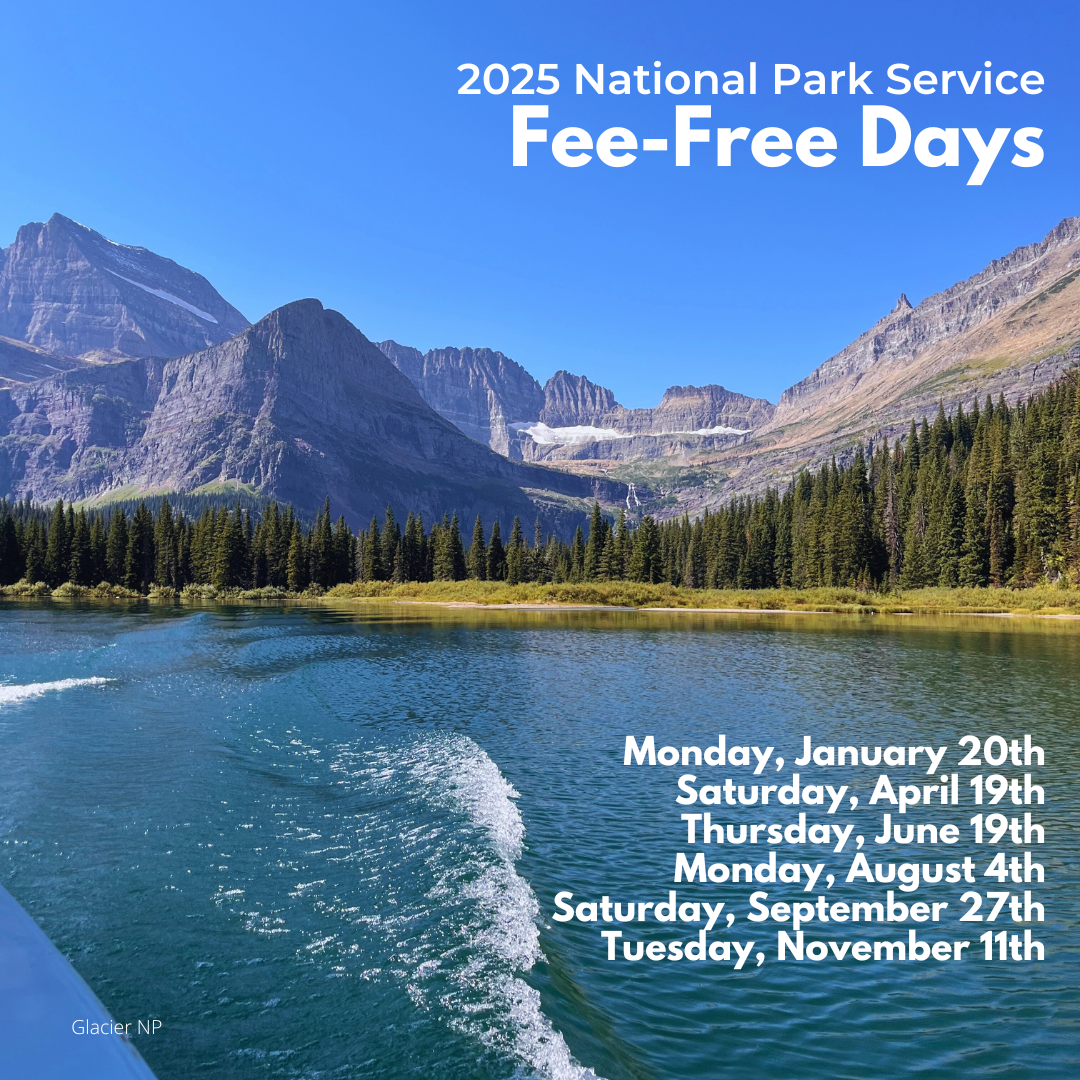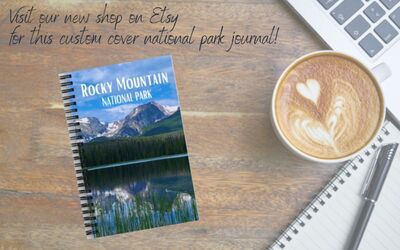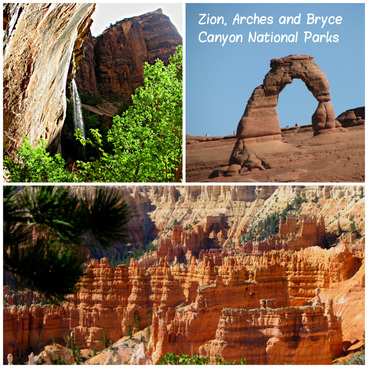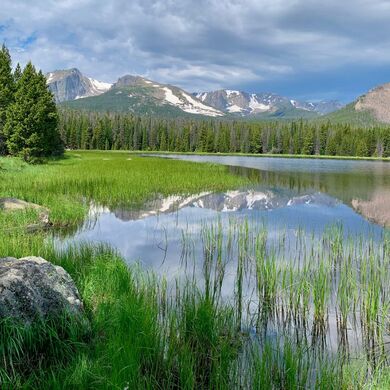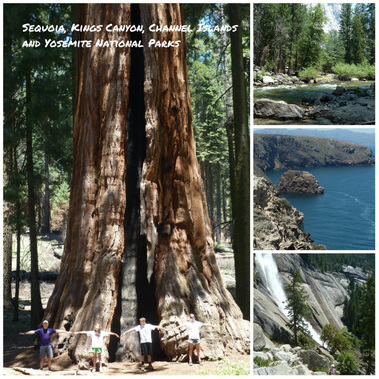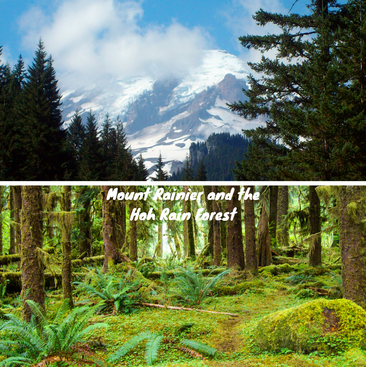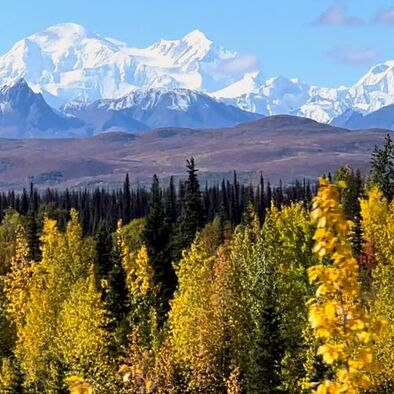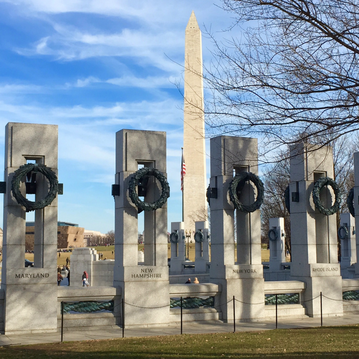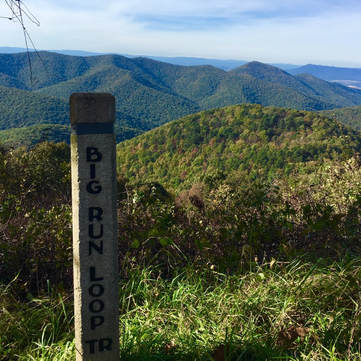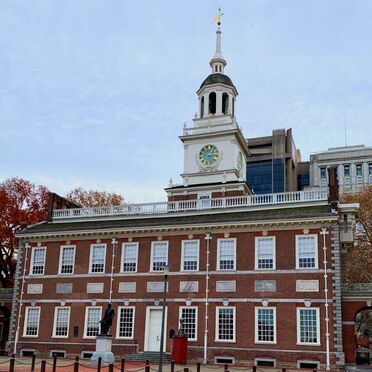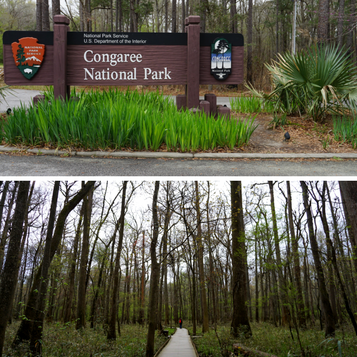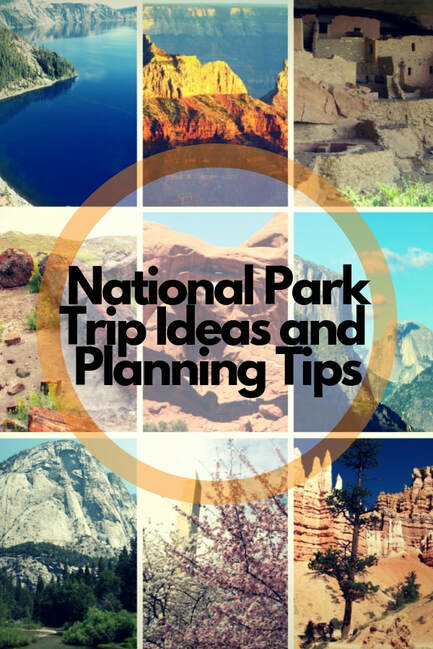*This post contains affiliate links; if you purchase something familyTravelsUSA may receive a small commission. As always, opinions are my own.
With over 400 units in the national park system, including 63 National Parks, this resource guide is intended to give you a place to start, with ideas to inspire a national park vacation by highlighting some of the bigger parks around the country. More parks will be added to this page in the future so check back. Keep reading to find ways to save money and other tips we've learned along the way to help in planning your national park vacation.
Be sure to check specific park websites and plan well in advance. For 2025, some national parks are again requiring vehicle reservations to enter all or portions of the park between certain hours, including Arches, Acadia (for Cadillac Mountain), Rocky Mountain, Glacier, Mount Rainier, and Haleakalā National Park (sunrise). In 2025, Great Smoky Mountains National Park requires the purchase of a parking tag. There may be some hikes that require a reservation or permit at other parks. Always check at least 6 months out to see what permits/reservations are required to enter the park. Expect parking areas to fill quickly early in the day and plan accordingly.
With over 400 units in the national park system, including 63 National Parks, this resource guide is intended to give you a place to start, with ideas to inspire a national park vacation by highlighting some of the bigger parks around the country. More parks will be added to this page in the future so check back. Keep reading to find ways to save money and other tips we've learned along the way to help in planning your national park vacation.
Be sure to check specific park websites and plan well in advance. For 2025, some national parks are again requiring vehicle reservations to enter all or portions of the park between certain hours, including Arches, Acadia (for Cadillac Mountain), Rocky Mountain, Glacier, Mount Rainier, and Haleakalā National Park (sunrise). In 2025, Great Smoky Mountains National Park requires the purchase of a parking tag. There may be some hikes that require a reservation or permit at other parks. Always check at least 6 months out to see what permits/reservations are required to enter the park. Expect parking areas to fill quickly early in the day and plan accordingly.
Go straight to the Tips and Resources
Many of the parks are within driving distance of each other so it's simple to put together a national park road trip itinerary.
- Continue reading for trip ideas from coast to coast.
- Click on one of the related posts below, where you can find detailed information for select parks.
- Explore our Get Up and Go Itineraries, which include day by day itineraries to help plan your next national park road trip.
Learn more with these related blog posts
National Park Road Trip Ideas
The Southwest Tour, Utah. This loop covers some of the most scenic national parks in Utah. These include Arches, Canyonlands, Capitol Reef, Bryce Canyon and Zion National Park. Find our southwest road trip itinerary here. You can also begin and end in Salt Lake City, making a loop that will cover all these unique parks. Moab is the perfect base location to explore both Arches and Canyonlands. Bryce Canyon, a personal favorite, has many wonderful family-friendly trails along with one of the best Night Sky programs in the country. Zion’s options range from family-friendly horseback riding and morning walks along the Virgin River, to strenuous hikes in the Narrows. Canyonlands provides ideas to get kids engaged, while Capitol Reef offers Archeology and Geology Ranger talks during the summer months. These parks are some of the most unique in terms of formations, whether it is the unearthly “hoodoos” in Bryce Canyon or the amazing landscape found in Arches. The drive between these parks is very manageable and you can take as much time as you need. VisitUtah is also a great resource for finding all the information you need to plan an amazing family trip. The website also lists itineraries, so it is a great place to start the planning process. This 8 day Colorado & Utah road trip also covers many of these national parks along with several cool state parks.
Lake Powell and the Grand Canyon, Utah/Arizona. Many travelers will combine these destinations with the Southwest Tour above, although there is certainly plenty to do at just the Grand Canyon and Lake Powell. After seeing the beautiful Lake Powell shoreline from a tour boat, I think that renting a houseboat here is definitely on our family travel bucket list. Since our southwest tour, my daughter had the opportunity to take the Secret Antelope Canyon and Horseshoe Bend Overlook Tour, with jaw-dropping slot canyon views. At the Grand Canyon, take the time to visit the less popular North Rim in addition to the South Rim (this is easier if are combining your visit with Lake Powell and traveling from the north). Each rim offers a different perspective of this glorious natural wonder. Here's one way to spend a day exploring the South Rim. You can easily fly in and out of Las Vegas and rent a car for traveling to these parks.
Glacier National Park, Montana, to Banff National Park, Canada. This trip heads from Glacier National Park in Montana across the border to the Canadian Rockies so bring your passport! Take at least 3 full days to explore the massive Glacier National Park, with miles of hiking and auto-touring options available to visitors. Don’t miss a chance to take the Many Glacier scenic boat tour. Then drive from the east side of the park into Canada to Canmore, your destination for a few nights. The town makes a good base to explore Banff National Park, home to stunning Lake Louise and Moraine Lake. With more time, explore Yoho and Jasper National Parks in Canada, along with the Waterton International Peace Park, which sits on the border between Canada and the U.S. Find our 3-Day Itinerary for Glacier National Par and details of our 9-day road trip from Glacier to Banff.
Glacier National Park, Montana, to Banff National Park, Canada. This trip heads from Glacier National Park in Montana across the border to the Canadian Rockies so bring your passport! Take at least 3 full days to explore the massive Glacier National Park, with miles of hiking and auto-touring options available to visitors. Don’t miss a chance to take the Many Glacier scenic boat tour. Then drive from the east side of the park into Canada to Canmore, your destination for a few nights. The town makes a good base to explore Banff National Park, home to stunning Lake Louise and Moraine Lake. With more time, explore Yoho and Jasper National Parks in Canada, along with the Waterton International Peace Park, which sits on the border between Canada and the U.S. Find our 3-Day Itinerary for Glacier National Par and details of our 9-day road trip from Glacier to Banff.
Yellowstone and the Grand Tetons, Wyoming. A visit to Yellowstone should be on every national park bucket list if for no other reason than it was America’s First National Park. The famous geysers of Yellowstone can be enjoyed throughout the year, but many of the park roads are closed in winter. During the warmer months, fly into Billings, Montana, and drive the scenic Beartooth Highway, which has been designated as “A National Scenic Byways All-American Road.” Kids will enjoy visiting nearby Cody, Wyoming, known as the “Rodeo Capital of the World” and the home of the Buffalo Bill Center of the West. In Grand Tetons National Park, you can enjoy a float trip down the Snake River, or take one of several scenic drives through the park and search for moose. Several family members have visited Grand Tetons in recent years and loved it! Highlights include kayaking on picturesque String Lake and finding moose! Throw in a few days at a dude ranch for a memorable family experience. Here’s an adventurous 7 day road trip itinerary from Denver to Grand Teton and Yellowstone National Parks. It includes longer hikes, kayaking, and van camping throughout the parks.
Rocky Mountain National Park, Colorado. In less than two hours from Denver experience the beauty of Rocky Mountain National Park. Since this is a high elevation park with most hikes starting at 7,000 + feet, consider spending a day or two exploring Denver to get acclimated. You can also take a short hike at Red Rocks or one of the local state parks to warm up! Then head to Estes Park, the perfect base for exploring Rocky Mountain National Park. Be sure to reserve a park pass in advance, especially for the popular Bear Lake corridor. There you will find scenic lakeside strolls and popular hiking trails to alpine lakes. Read 9 ways to explore Rocky Mountain National Park which includes a 3-day itinerary for visiting during the warmer months.
If you have more time, Black Canyon of the Gunnison National Park is about a 5 hour drive from Denver. This Colorado and Utah road trip covers several national parks along with picturesque state parks.
If you have more time, Black Canyon of the Gunnison National Park is about a 5 hour drive from Denver. This Colorado and Utah road trip covers several national parks along with picturesque state parks.
Yosemite, Sequoia and Kings Canyon and the Channel Islands National Park, California. We visited these parks as part of our 17 day California road trip, and loved that each one of these parks had something unique to offer. We combined this trip with fun activities in Los Angeles and San Francisco, along with a drive south along the Pacific Coast Highway, for a vacation that truly had something for everyone. The Channel Islands, home to 145 plant and animal species found nowhere else in the world, offers kayaking along with world-class snorkeling and scuba diving. In Sequoia, kids will be amazed by the towering trees in the Giant Forest, including the General Sherman Tree, the largest living tree in the world. Since Sequoia and Kings Canyon are adjacent, you can visit both parks within a few days. Many people are put off by the narrow drive on Highway 180 into Kings Canyon (the “Kings Canyon Scenic Highway”), but it is well worth the time. The views are unbelievable, and the family-friendly hike through Zumwalt Meadow is spectacular. Visitors will also see two granite domes, North Dome and Grand Sentinel, rising from the canyon floor. From Kings Canyon, travel north to Yosemite, where you can easily spend 3 or 4 days enjoying hiking, camping, fishing, and ranger programs. Kids can take a horse-drawn carriage ride at the Pioneer Yosemite History Center. Be sure you have booked your lodging well in advance, as accommodations fill up quickly at this popular park.
Joshua Tree, California. Just under 3 hours east of Los Angeles, find the unique Joshua Tree National Park. If you have flexibility, visit outside of the hot summer months. We visited in late February and were blessed with perfect weather for two days of exploring Joshua Tree. Don’t miss Skull Rock, the ranger-led tour of Keys Ranch, and a stop at Cap Rock for an easy walk with lots of the namesake trees. Combine a park visit with a few days in Palm Springs, and nearby hikes in Tahquitz and Indian Canyons. This trip would be perfect with a night or two at one of the beaches in Southern California.
Mount Rainier, Mount St. Helens National Volcanic Monument, and Olympic National Park, Washington. Seattle is the place to start this amazing road trip loop. Take the Edmonds Kingston Ferry to the diverse Olympic National Park, where you can visit the Hoh Rain Forest and enjoy the natural beauty of Kalaloch and Ruby Beach. Follow Highway 101 around the Olympic Peninsula as you travel to Mount St. Helens, which is designated a National Volcanic Monument. Be sure to visit Johnston Ridge Observatory, which is open May through October. From there, head to breathtaking Mount Rainier. If you can, enter from the eastern side of the park to follow the sunrise. Otherwise, it may take all day for the “mountain to come out” of the clouds. On your way back to Seattle, make a stop at the Nisqually Living History Museum, the site of the first European settlement on Puget Sound. Check out our 19 day Pacific Northwest road trip for more ideas of things to do in the area.
Kenai Fjords and Denali National Park, Alaska. Whether you see Alaska by land or by sea, don’t miss a chance to spend time in at least one of the majestic national parks. We absolutely loved visiting both Kenai Fjords and Denali National Park during our 10 day Alaska vacation. While there are other parks scattered around the massive state (some like Katmai can only be reached via air), these two parks are accessible by car, train and/or bus from Anchorage. With several days in Seward, you can experience the spectacular scenery and marine life found in Kenai Fjords on a boat tour, hike to see Exit Glacier, and take a kayak tour in Resurrection Bay. Denali National Park, at 6 million acres, offers hiking, bus tours (private vehicles are not allowed past mile 15), and a visit with the hardworking sled dogs! While the main park road is currently closed around mile marker 43 due to a landslide, there’s still so much to explore! We were fortunate to catch a clear view of the mighty Denali on our last day in the park & from the train ride back to Anchorage! Explore our 2 day Denali National Park itinerary here.
Washington, DC and Virginia. Start by visiting the National Mall, home to many iconic outdoor memorials. These include the Washington Monument, along with the Lincoln, Jefferson, World War II and Martin Luther King, Jr memorials, just to name a few. Take a National Mall tour with Free Tours by Foot or try one of the many National Park Service ranger-guided walks when available. Don’t forget about places like Ford’s Theater National Historic Site, which is a few blocks off the National Mall. For a different perspective, try one of the nighttime tours of the monuments. Explore our Guide to Visiting Washington DC for more resources and tips.
Just outside of DC, you’ll find three of my local favorites, Theodore Roosevelt Island, Wolf Trap National Park for the Performing Arts, and Great Falls Park. Roosevelt Island has both a Junior Ranger and a TRACK Trails program for kids. Experience an outdoor concert on the lawn at Wolf Trap, which is the only national park that is dedicated to the performing arts. View the natural beauty of Great Falls with easy access to viewing points from the Visitor Center. Virginia is also home to Manassas National Battlefield Park, the site of two major Civil War battles. Continue heading west to Shenandoah National Park, a local favorite for hiking, camping and stunning views. It's a popular park in the fall when the leaves are changing colors, with many pullouts just off of Skyline Drive. Explore the list of 30 Things You Should Do When You Visit Virginia.
Philadelphia, New York, Boston, and Maine
History lovers may enjoy a road trip covering Philadelphia, Ellis Island and the Statue of Liberty, and Boston. In Philadelphia, walk the streets where history was made, take a guided tour of Independence Hall, and see the Liberty Bell. The National Park Service app has several self-guided walking tours of the area around Independence Hall. For the Statue of Liberty and Ellis Island, grab tickets on-line in advance of a visit. The ferry departs from either The Battery in New York or Liberty State Park in New Jersey.
In Boston, kids will love following the red brick Freedom Trail, which covers historical sites that span about two and a half miles around the city. Boston National Historic Park includes sites like the USS Constitution, Faneuil Hall, Bunker Hill, and the Old North Church. While in town, visit the North End for a taste of Italy. For a break from the city, during the warmer months visitors can take the seasonal ferry to Boston Harbor Islands National Recreation Area, which is also part of the National Park system. Then road trip from Boston to Bar Harbor, where beautiful Acadia National Park awaits!
History lovers may enjoy a road trip covering Philadelphia, Ellis Island and the Statue of Liberty, and Boston. In Philadelphia, walk the streets where history was made, take a guided tour of Independence Hall, and see the Liberty Bell. The National Park Service app has several self-guided walking tours of the area around Independence Hall. For the Statue of Liberty and Ellis Island, grab tickets on-line in advance of a visit. The ferry departs from either The Battery in New York or Liberty State Park in New Jersey.
In Boston, kids will love following the red brick Freedom Trail, which covers historical sites that span about two and a half miles around the city. Boston National Historic Park includes sites like the USS Constitution, Faneuil Hall, Bunker Hill, and the Old North Church. While in town, visit the North End for a taste of Italy. For a break from the city, during the warmer months visitors can take the seasonal ferry to Boston Harbor Islands National Recreation Area, which is also part of the National Park system. Then road trip from Boston to Bar Harbor, where beautiful Acadia National Park awaits!
Southeast USA: Great Smoky Mountains, Congaree National Park and The Everglades
The Southeast USA is home to several national parks, including the Great Smoky Mountains, Congaree and The Everglades National Parks. Great Smoky Mountains National Park consistently holds the title of the most visited national park in the USA. Once you visit you’ll see why it’s a popular family favorite, with miles of hiking trails, wildlife, and waterfalls to be discovered. Cades Cove is a popular place for wildlife spotting, including black bears. The park website has some great tips on wildlife viewing that everyone should read before they go. Read more about our visit and things to do at Great Smoky Mountains National Park.
Just a few hours from the Smoky Mountains, check out the unique Congaree National Park in South Carolina. It’s a short drive from the capital city of Columbia, which is a fun place to spend a weekend with plenty of family-friendly things to do. The park is unique—home to old growth hardwood forest which benefits from the waters of the nearby Congaree and Wateree Rivers that flood through the park (the flip side is that the trails are sometimes closed due to heavy rain). There's a number of easy and moderate trails, and in warmer weather, explore Cedar Creek with a marked canoe trail. Be sure to bring bug spray during the summer months—when they have a mosquito meter you know it's going to be bad!
The Southeast USA is home to several national parks, including the Great Smoky Mountains, Congaree and The Everglades National Parks. Great Smoky Mountains National Park consistently holds the title of the most visited national park in the USA. Once you visit you’ll see why it’s a popular family favorite, with miles of hiking trails, wildlife, and waterfalls to be discovered. Cades Cove is a popular place for wildlife spotting, including black bears. The park website has some great tips on wildlife viewing that everyone should read before they go. Read more about our visit and things to do at Great Smoky Mountains National Park.
Just a few hours from the Smoky Mountains, check out the unique Congaree National Park in South Carolina. It’s a short drive from the capital city of Columbia, which is a fun place to spend a weekend with plenty of family-friendly things to do. The park is unique—home to old growth hardwood forest which benefits from the waters of the nearby Congaree and Wateree Rivers that flood through the park (the flip side is that the trails are sometimes closed due to heavy rain). There's a number of easy and moderate trails, and in warmer weather, explore Cedar Creek with a marked canoe trail. Be sure to bring bug spray during the summer months—when they have a mosquito meter you know it's going to be bad!
From South Carolina, if you head south on I-95 and keep driving for about 10 hours (although there are plenty of fun places to stop along the way), you’ll eventually reach Everglades National Park at the southern tip of Florida. Although the state is home to 3 unique national parks— Biscayne, Everglades, and Dry Tortugas— the general public is probably most familiar with the Everglades. Consisting of over 1.5 million acres of wetland, there are plenty of opportunities for activities like canoeing and kayaking, bird watching, bicycling and tram tours, and of course the popular air boat tours. Nearby Biscayne National Park consists of 95% water, and also offers a variety of water-based outdoor activities. It’s a great option if you are visiting nearby Miami. And finally, the Dry Tortugas are located about 70 miles west of Key West. While I’m a big proponent of our national parks and one of the things I love is that access to most parks is relatively cheap or free, Dry Tortugas is one major exception. Access is limited via the public ferry, private boats or seaplanes, with a steep cost (roughly $175 per adult and $125 per child). But I’ve been told that the natural beauty is a sight to see so it’s on my bucket list!
If you are looking for some extra help in planning your visit to one of America’s beautiful National Parks, here are some tips and other ideas.
1. Explore the National Park App to help plan your trip. One of the best features I have found is the ability to save a park for offline use. This is particularly useful as Wifi is often spotty when you are out on a trail. In addition to tons of information about each park, other nice features include access to the latest park alerts, self-guided tours, and visitor center information.
2. Invest in one good guide book. I still use the gift from my son of the Moon USA National Parks - The Complete Guide to All 59 Parks (this version has since been updated). I may be old fashioned with a love for actual books in today's digital world, but this guide offers so much information in one place and I look forward to using it to plan future trips! The author has included wonderful tips, maps and things not to miss, and the book is an overall excellent resource for national park inspiration. With that said, you should always check the park websites for the absolute latest information.
3. Use the “Find a Park” link on the National Park website to search any state in the country to find all the national parks within that state. The information also includes listings for the National Register of Historic Places, and statistics about yearly visitors to each park. The website also includes games and activities to get your children involved before or after you go on a trip. The National Park Service Trip Planning Guide is another helpful tool to help plan your adventure. It includes checklists to use before, during, and after your trip.
4. If you want to stay in the more popular parks, you should book your accommodations as far ahead of time as you can (often bookings are accepted as much as a year ahead). Also, keep in mind there are often lower cost accommodations available in most parks, such as camping and cabin rentals, along with the traditional Lodge choices. Kids will have fun with the Junior Ranger Program, so don’t forget to pick up this information when you arrive at a park. It’s a great way to keep them interested, especially when they are looking at things like petrified wood!
5. If you are going to be traveling to several parks in one visit, consider purchasing the Annual Pass, which is valid for twelve months from the month that you purchased. To maximize your purchase, you can always use the pass as an opportunity to explore some new places close to home during the next year after you return. Check into the Senior Pass option if you are age 62 or older.
3. Use the “Find a Park” link on the National Park website to search any state in the country to find all the national parks within that state. The information also includes listings for the National Register of Historic Places, and statistics about yearly visitors to each park. The website also includes games and activities to get your children involved before or after you go on a trip. The National Park Service Trip Planning Guide is another helpful tool to help plan your adventure. It includes checklists to use before, during, and after your trip.
4. If you want to stay in the more popular parks, you should book your accommodations as far ahead of time as you can (often bookings are accepted as much as a year ahead). Also, keep in mind there are often lower cost accommodations available in most parks, such as camping and cabin rentals, along with the traditional Lodge choices. Kids will have fun with the Junior Ranger Program, so don’t forget to pick up this information when you arrive at a park. It’s a great way to keep them interested, especially when they are looking at things like petrified wood!
5. If you are going to be traveling to several parks in one visit, consider purchasing the Annual Pass, which is valid for twelve months from the month that you purchased. To maximize your purchase, you can always use the pass as an opportunity to explore some new places close to home during the next year after you return. Check into the Senior Pass option if you are age 62 or older.
6. Wondering how to visit the National Parks for free? Plan a visit around the Fee-Free Entrance Days. In 2025 visitors can take advantage of 6 free entrance days scattered throughout the year. If you have a 4th grader in the family, sign up for the Every Kid Outdoors pass, which will provide free admission for the current year. In late 2020, it was announced that US military veterans and Gold Star Families will receive free national park access (along with free access to other federal recreation areas). Don't pass up these opportunities! But also remember that many of the smaller units in the national park system do not charge admission, and are often close to home.
7. The National Park Service website is a wonderful resource to help you plan in advance. You can determine which activities such as hiking, ranger-guided tours, or other tours are best suited for your family and whether ticket purchases or reservations are required. The on-line park newspapers often have detailed maps and hiking guides. Also, they usually have important information about closings or construction that may impact your visit. Social media is also good for finding last minute information like park road closures and weather conditions.
8. Always plan a stop in the Visitor Center. The park rangers have so much great information to offer, and at the end of your trip, it's a great way to support the parks and bring home a small memento. We love our collection of Christmas tree ornaments that we have purchased from each of the parks we visit. Playing cards and small games also make fun gifts. Plus we have a large collection of Junior Ranger badges that we keep on display in clear, glass jars.
When you do go, please keep in mind Leave No Trace principles and read these tips from the National Park Service for how to #RecreateResponsibly. Start planning now for your next great family adventure!
Related National Park Posts:
8. Always plan a stop in the Visitor Center. The park rangers have so much great information to offer, and at the end of your trip, it's a great way to support the parks and bring home a small memento. We love our collection of Christmas tree ornaments that we have purchased from each of the parks we visit. Playing cards and small games also make fun gifts. Plus we have a large collection of Junior Ranger badges that we keep on display in clear, glass jars.
When you do go, please keep in mind Leave No Trace principles and read these tips from the National Park Service for how to #RecreateResponsibly. Start planning now for your next great family adventure!
Related National Park Posts:
- 3 Days in Scenic Glacier National Park
- 2 Days in Denali National Park
- 9 Ways to Explore Rocky Mountain National Park
- Fun Things to Do With 3 Days in Seward Alaska
- Cool Hikes & Other Things to Do With 2 Days in Joshua Tree National Park
- 3 Reasons to Take the Keys Ranch Tour at Joshua Tree National Park
- 5 Ways to Enjoy New River Gorge National Park and Preserve
- On the Road in Utah: Visiting Arches, Bryce Canyon and Zion National Parks
- Get Up and Go - Road Trip Ideas and Itineraries
- 4 Favorite National Park Units in the DC Area
- Celebrate the Outdoors at Great Smoky Mountains National Park
- Why You Should Spend a Day at Channel Islands National Park
- 5 Amazing Reasons to Visit a National Park
- Guide to Visiting Washington, DC

